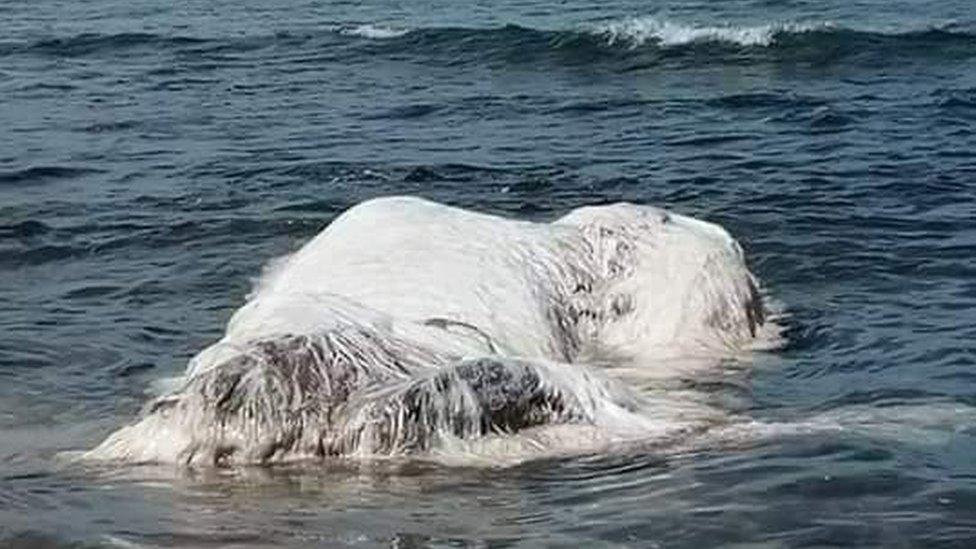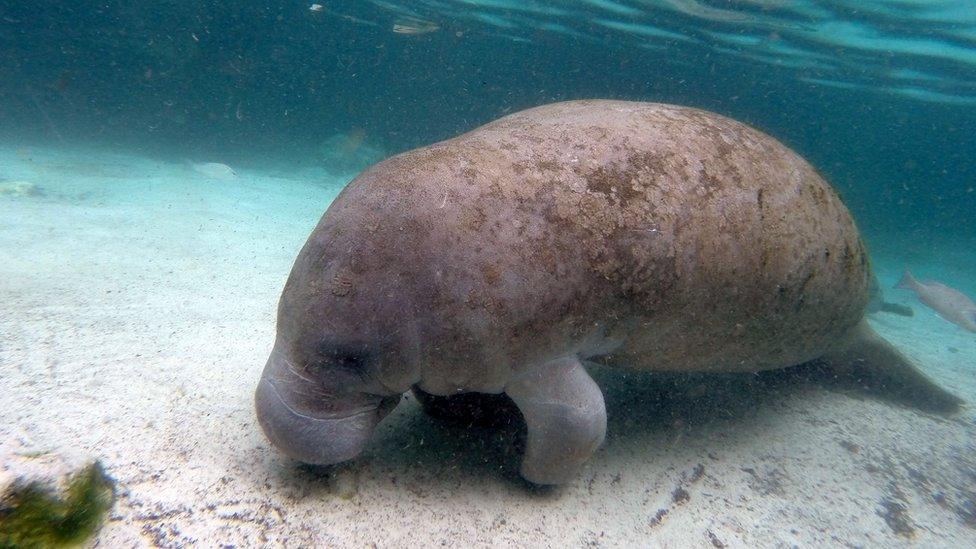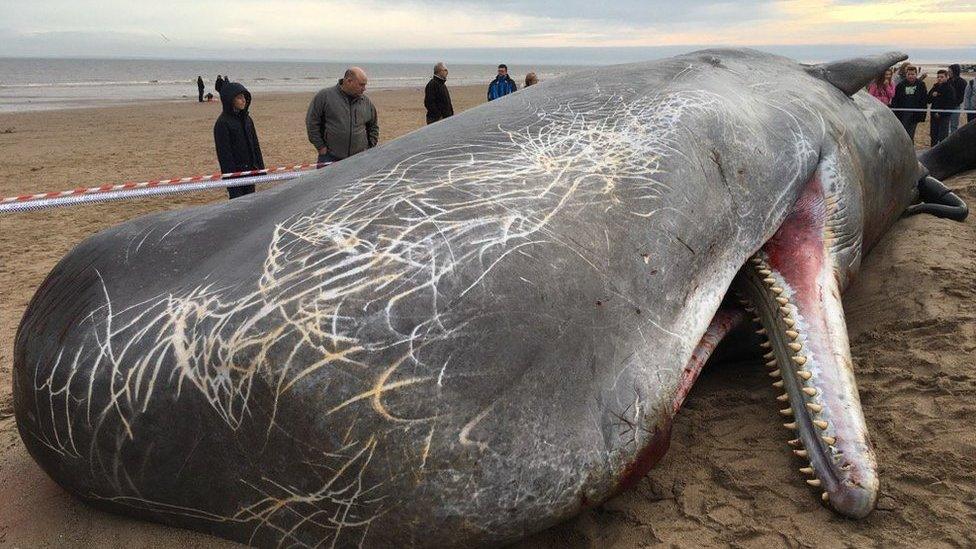What is the 'hairy blob' or globster found on the Philippines shore?
- Published

A six-metre-long "hairy" sea creature has washed up on the shore of Dinagat Island in the Philippines and people have been questioning what it is.
An unidentified creature like this is often known as a "globster" and they've been washing up for years, external.
While some people think it might be new species, experts aren't convinced.
Lucy Babey, head of science and conservation for the animal charity Orca, says it's definitely the carcass of a dead animal - probably a whale.
"It's definitely a very decomposed sea creature in the later stages of decomposition," she tells Newsbeat.
Ruffa shared a picture of it on Twitter., external
"The carcass is about six metres long, but that's obviously not the whole carcass - there's no tail so it would have been bigger than that.
"That would suggest that it was probably a whale."

Blue whales are the largest creatures on Earth
'But it could be a manatee'
"They have numerous whale species in the Philippines such as the blue whale, fin whales and humpback whales as well as smaller whales such as minke whales.
"But they also have manatees out there, so it could be a manatee.
"Unfortunately with this animal it is far too decomposed to be able to get a confident identification on what animal it was."

Manatees are also known as sea cows
Whales and manatees aren't hairy though
She explains that the "hair" you can see in the image is actually more likely to be muscle fibres, where the body has gone quite far along the decomposition process.
"Other creatures could have sped up the decomposition process, but it looks like a normally decomposing carcass," she says.
Some people thought it looked like Aang from The Last Airbender, external
So what was it doing there?
Lucy says that only 10% of whales and dolphins that die out at sea actually end up on the shore.
"There's an awful lot that die and stay out at sea," she says.
"They can come to the shore for a variety of reasons, but in this case, because it's an animal that died quite a while ago, it could have washed up because of storm surges."
Recently an earthquake struck in the region.
"That could have caused pressure on the seabed, which could have got the animal up nearer to the surface and onto the shoreline," says Lucy.
"It could have shifted the carcass, it could have caused differences in the tides and the strengths of the waves which would have washed it up on the shore."
Risk to human health
"There is obviously a risk of contamination," says Lucy.
"Any decomposing animal will carry diseases, so now they will need to safely dispose of it.
"In this country [the UK] we would put them in a landfill site, but they may move the carcass far out to sea."

A sperm whale carcass in Norfolk
Things like this don't wash up in the UK
"The animals we have wash up are pretty fresh. We get lots of whales, dolphins and sharks," explains Lucy.
A fin whale washed up in Norfolk last year.
Find us on Instagram at BBCNewsbeat, external and follow us on Snapchat, search for bbc_newsbeat, external